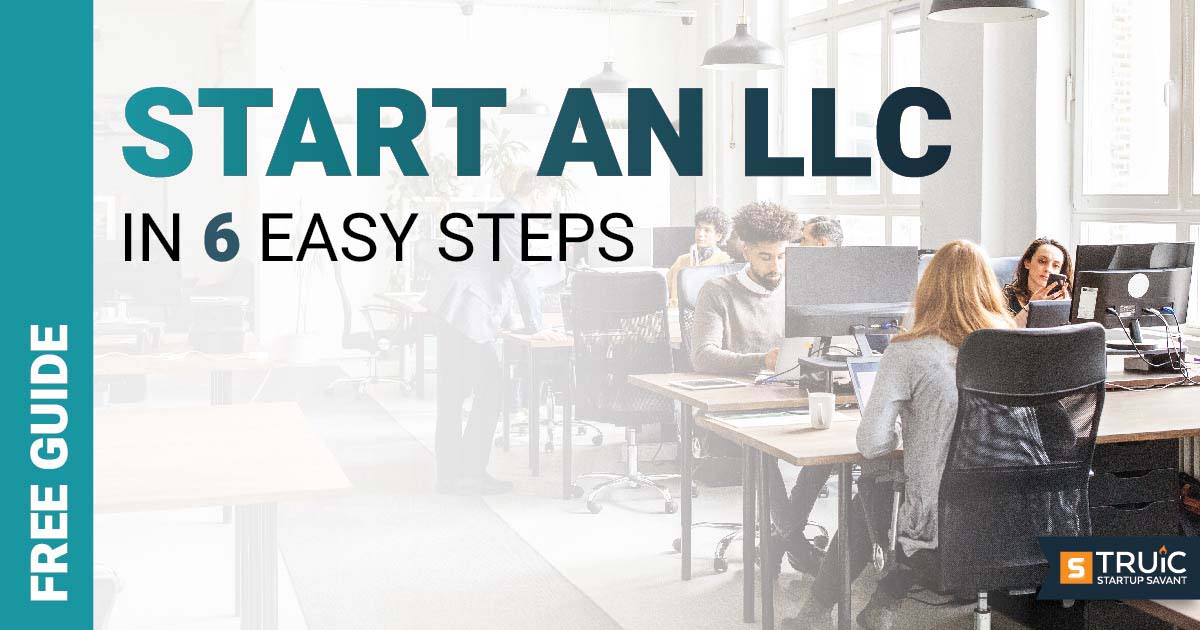How to Write an Elevator Pitch

Last Updated: By TRUiC Team
Being able to effectively communicate what your startup does in 30 seconds could mean the difference between gained and lost opportunities. An elevator pitch prepares you to tell a compelling story of your startup’s value proposition in seconds and can be used to attract investors, partners, and customers.
This guide breaks down what an elevator pitch is, how to create an elevator pitch for your startup, as well as some elevator pitch templates and examples to help you get started.
Startup Elevator Pitches
Whether you’re at a networking event or pitching to a potential investor, you need to be able to describe your startup quickly and confidently. Not only does an elevator pitch communicate your company’s value, it can build trust in you as a founder.
A good elevator pitch is basically a 30-second sales pitch about your startup. There are many elevator pitch examples out there to inspire you, but first, it is important to understand the elements that go into writing a perfect elevator pitch.
What Is an Elevator Pitch?
An elevator pitch, otherwise known as an elevator speech or elevator statement, is a short description of what your startup is all about. Crafting a well-written elevator pitch helps you convey your startup’s value proposition, get clear in your messaging, and hopefully open doors for opportunities.
Your elevator pitch should be between 20 to 30 seconds — roughly the time it takes for a short elevator ride — and typically two to three sentences long. This means your pitch needs to be succinct, engaging, and convincing right away.
When to Use an Elevator Pitch
Elevator pitches are used in several different circumstances. For startups, they are commonly used during initial contact with investors to secure meetings and hopefully result in a funding round.
Elevator pitches can also be used to tell your startup’s story to potential partners and customers, as well as at job interviews or networking events. All-in-all, an elevator pitch is an opportunity to refine what your startup is about and why it matters.
How to Write an Elevator Pitch for a Startup
Writing an elevator pitch requires goal-setting and targeting to ensure your message is effective. Then, you need to make sure you are accurately describing your startup's business model, why it exists, and how it could positively impact your audience.
To get started writing an elevator pitch for your startup, follow these steps:
1. Know Your Audience
The first step to writing a home-run elevator pitch is to clearly define who your audience is. Since elevator pitches can be used for a variety of purposes, crafting your pitch to best communicate with your audience is key.
This may mean creating more than one elevator pitch to appeal to different audiences.
Common target audiences for elevator pitches are investors, customers, and partners. Each of these groups has different perspectives and ambitions when they are listening to your pitch, meaning you may need to adjust your pitch to accommodate this.
For example, if you are pitching to a customer, you want to identify the pain point they are experiencing and strongly drive home the solution your startup provides. Whereas with an investor, you need to make sure you are positioning your startup as solving a widespread problem successfully and, therefore, fundable.
2. Determine The Goal of Your Elevator Pitch
The goal of your elevator pitch goes hand-in-hand with your target audience. However, this is more relative to what you are looking to get out of the elevator pitch.
For example, if you are pitching to a potential investor, your goal may be to secure a meeting to share your pitch deck. If this is the case, your elevator pitch needs to be oriented around meeting this specific goal.
3. Provide Context About Your Startup
Now, you’re ready to start writing your elevator pitch. The first step is to succinctly provide context for why your startup exists and what it does.
This should consist of outlining the pain point your startup is solving and the solution your company has created. Conveying the severity of the problem, as well as the necessity of the solution you’re providing, is key.
4. Communicate Your Value Proposition
Next, your elevator pitch needs to communicate your value proposition or unique selling proposition (USP).
This is what makes your startup unique and worth paying attention to. No one wants to invest or partner with a mediocre company, this is your opportunity to share what your startup has that competitors don’t.
For example, your elevator pitch may reference something your startup does that competitors don't, a unique offering or service, or your startup's traction in the space relative to competitors.
5. Finish on a Strong Note
To end your startup elevator pitch, you need a memorable finish.
Typically, an elevator pitch will end with a question that opens up the conversation and allows you to intertwine your startup with your target audience further. However, the finale of your elevator pitch also be a statement of intent or an offer to discuss your startup or its product or services further.
Either way, the end of your elevator speech should leave the door open for further conversation and invite your audience to help you accomplish the goal you established initially.
6. Compile Your Elevator Pitch
Once you have outlined your pain point, your startup's solution, a unique selling proposition, and a strong call-to-action, you are ready to compile your elevator pitch.
Your completed elevator pitch should be succinct but effective, clocking in around 20-30 seconds, as the goal of the elevator pitch is to share what your startup is about with little time to spare.
Don't be afraid to refine and update your elevator pitch to ensure it communicates your message effectively.
7. Practice Your Elevator Pitch
Finally, you need to practice your completed elevator speech — many times.
After all, the way you deliver your elevator pitch may be just as important as what is included in your elevator pitch.
Whether you record yourself delivering your elevator pitch or practicing with a friend or colleague, practice is essential to delivering your elevator pitch with the confidence required to make a lasting impression and help your startup reach its goals.
Elevator Pitch Examples
These are some sample elevator pitch examples that can help inspire you to create a good elevator pitch for your startup. Both of these examples can be refined and reworked, just be sure to prioritize conveying your startup's pain point, solution, unique value, and a strong call to action.
Networking Events and Customers
Our app HomeHelper lets you effortlessly book vetted, background-checked home services professionals – think cleaning, handy-work, laundry, and more – whenever you need them, with just a few taps. We already have 5,000 active users and are looking to scale.
For Investors
MediCheck is bringing affordable, accessible healthcare to rural communities via our mobile clinics. Our services range from primary care to diagnostics. We're currently serving over 3,000 patients per month and are seeking $500,000 to expand our fleet nationwide.
Elevator Pitch Templates
These elevator pitch templates can be adapted to any industry or product by filling in the bracketed sections with details specific to your startup. When utilizing an elevator pitch template, remember to focus on quickly communicating your key differentiation, target customers, traction, and goals.
For Networking Events
[Name] is a [category/description] that provides [key benefit #1], [key benefit #2], and [key benefit #3]. Unlike [competitor], our product/service [unique differentiator]. We have already [major traction/stats] and are looking to [objective].
For Investors
For [target customers] who [customer need/problem], [name] is a [category/description] that [key benefit]. Our key features include [feature 1], [feature 2], and [feature 3]. We [traction/achievements] and are looking for [investment/partnerships] to help [growth goals].
For Potential Partners
Imagine [painting an aspirational picture]. With [name], now you can [key benefit]. We help [target customers] [address problem/achieve goal] by providing [description of key features]. Over the past [timeline], we have [key metrics/traction]. Join us as we [objective], starting with [next milestone].
For Customers
We understand [customer pain point]. Unlike [competitors], [your product/service] provides [key benefit] to help you [solve a problem]. Current clients like [name drops] have seen [results] by switching to us. We're confident we can exceed your expectations, too.
Frequently Asked Questions
How do you make an elevator pitch?
You can make an elevator pitch by first determining your goal and audience. Then, write a 30-second script detailing what your startup does, the problem it is solving, and your unique value proposition. You can choose to use an elevator pitch template, get inspired by an elevator pitch example, or craft one from scratch.
What are the steps to making a good elevator pitch?
To create a strong elevator pitch, follow these steps:
- Establish your goal
- Know your audience
- Provide valuable context
- Communicate your value proposition
- Add a strong call to action
- Practice, practice, practice
By following these steps, you can easily create a 30-second elevator speech that conveys the mission and value of your startup to investors, customers, or even at a networking event.
What is an elevator pitch example?
Elevator pitch examples are samples that include all of the necessary elements to make a solid elevator pitch. Here's a sample elevator pitch example:
"FarmFresh is an online farmer's market that delivers ultra-fresh, organic produce and artisanal foods directly from family farms to your door. With over 200 farm partners across the region and competitive pricing, we make it easy to access healthy, sustainable foods. We have delivered to over 20,000 happy customers and are raising our Series A to scale up hiring and logistics to reach many more."
How do you write a good elevator pitch hook?
To write a strong elevator pitch hook, you need to first identify the audience you're trying to reach and appeal to their interests and needs. For example, if you are trying to appeal to potential customers, you may want to center your elevator pitch around pain points they are experiencing in order to effectively convey how your startup is solving them.


